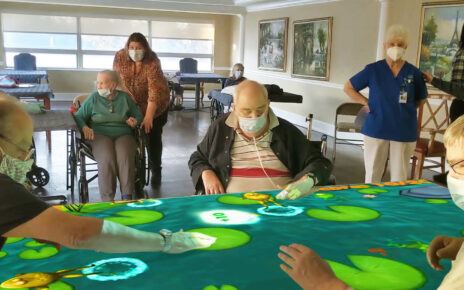by OLIVIA MASTRY, JD, MPH, COLLECTIVE ACTION LAB
We have reached a new horizon in which many organizations are lifting their gaze from the immediate challenges of COVID-19 and asking, now what? For many, this means taking stock of side-lined strategies and asking, what is still relevant and what requires change?
Before diving in with questions about the NOW issues, like boosting census and workforce, pausing to reflect on changes your organization might anticipate in the FUTURE will generate more visionary and informed strategies for the years ahead. While this may seem daunting given current uncertainties, it is a critical activity and within reach using strategic foresight.
Strategic foresight involves anticipating change we might see in the future so that we can organize for and take appropriate strategic action now. It involves looking beyond near-term trends and exploring macro-level emerging issues that show what could change in the future, thereby creating opportunities or threats for your organization. Emerging issues are less certain than near term trends, and by reflecting on and prioritizing those that could have a high impact on the field and your organization, you can imagine how alternative futures might unfold. From there, you can articulate elements of the preferred future you want to work towards. The process will likely redefine your organization’s vision, which in turn will inform and shape your responsive strategies in a way that is more future informed, anticipatory, and proactive rather than defensive.
Listed below are 10 implications that flow from emerging issues. Boards and staff leadership can contemplate them and use some or all to construct a preferred future and vision for their organizations. In turn, this will drive responsive, proactive strategies that will likely result in some surprising shifts for organizations and lead to new ways of doing and being that positively impact us all.
1. A Different and Older Old: The number of older-older (100+) adults is growing exponentially; while emerging life habits and available interventions will produce a healthier aging population over time, we must still anticipate an increasingly diverse 75+ high need, middle-lower income population for at least the next 10 years (who are served by an increasingly diverse workforce).
2. Emerging Tools to Address Physical, Mental, Emotional-Social Health Needs/Demands: Anticipate radically different tools to meet evolving needs of a growing older population, including Artificial Intelligence (AI) and robotics, improved prognostic and precision medicine, mental health interventions, blanket vaccines, personal monitoring devices, brain health interventions, and social connection opportunities. This will, in turn, drive new and different care and support demands and expectations from older adults and their families.
3. Home-First, Whole-System, Closed Loop, Integrated Life Spaces and Connections: Targeting, integrating, coordinating, and packaging comprehensive support across sectors, settings, and partners with aligned interests and in virtual and physical spaces could be imperative to meet the emerging needs and demands of older adults. Increasingly advanced-care and support—including mental health interventions — offered wherever a person calls home is a likely norm.
4. Older-Adult Centered Economies and Infrastructure: The aging population brings engaged, productive older consumers who have unique needs/wants and are proven drivers of economic growth. This will drive responsive innovations around transportation, work, connectivity, caregiving, and built and external environments that are centered on older adults yet bring universal benefit to many others. Many of the innovators may be older adults themselves in a potentially “roaring” post-COVID-19 economy.
5. High Alert Systems and Security: Continual preparedness, infection control, emergency-response readiness, and cybersecurity will be a critical part of any organizational strategy, management, and investment; cybersecurity will continue to be a high priority risk. Societally, pandemic pressures, cybersecurity risks, privacy rights, national/international relations and economies pose collapse risk at sector and societal levels, including health and long-term care.
6. Potpourri of Housing Approaches: While existing affordable housing stock appears insufficient to meet future needs, evolving affordable housing options (container, tiny, 3-D printed housing), may assist older adults staying in community dwellings with a combination of human and AI in-home support; congregate supportive housing will still be needed, especially for the very frail and cognitively impaired, and those who cannot afford other options.
7. Technology as the Basement, not the Ceiling: Technology investments will increase to preserve functionality and meet consumer connection, care, data exchange, referral, and other demands; what used to be a nice-to-have is now a minimum.
8. Human + Technological Workforce: The nature of work, learning, and training could shift dramatically via concurrently hiring, educating, and training workforce in-house through AI, emerging worker-cooperatives within a broader caring economy, universal policies (guaranteed income) to support human workforce well-being; and emerging human caring replacement technologies such as care robots. Older adults will be among the workforce and key contributors if workplace and retirement policies evolve. Workforce leadership attributes will demand whole-system, community-level thinking and collaboration across sectors.
9. Sustained Equity and Population-Based Health Efforts: Assuring equity and health of populations will require intensified and sustained efforts that recognize and accommodate diversity, acknowledge, address, and repair racism and other forms of systemic bias, and seek community and population-level approaches to advance equitable health and well-being.
10. Evolving Public-Private Roles: Partnerships, societal contracts, roles, and resource allocations across sectors could be redefined to address racial and other inequities, close wealth gaps and the digital divide, and provide resources/funding, that could significantly impact chronic and long-term care funding, provision, workforce, and regulation.




